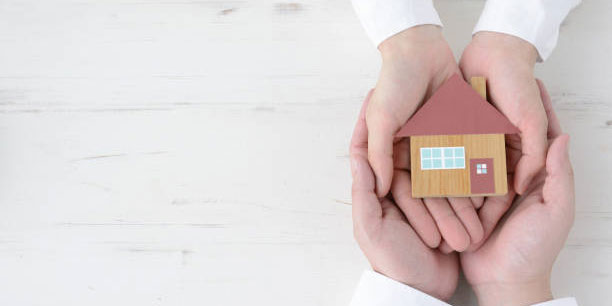What Does Homeowners Insurance Cover?
Oct 10, 2023 By Triston Martin
When you think of homeowners insurance, one of the first things that likely comes to mind is knowing your home and belongings are protected financially in case of a covered disaster or accident.
However, understanding your coverage can be complicated, so let's break it down! In this blog post, we'll explain all the ins and outs of homeowners insurance, from what types of coverage exist to how much money you might need for premiums.
Read on to find out more about the many advantages associated with having a robust policy in place.
What a Homeowner's Policy Provides
Your homeowner's insurance policy provides financial protection for your home and property in case of a covered disaster, accident, or theft. Generally speaking, it helps cover the costs of repairing damage to your home and replacing any belongings that may have been damaged or stolen.
Some policies even provide liability coverage if someone is injured on your property.
What does 'home' insurance cover?
Dwelling coverage
This type of coverage provides financial protection for physical damage caused to your home and other structures on the property (garages, fences, sheds). When choosing a policy, it is important to consider replacement costs rather than market value when deciding how much coverage you need.
Personal Property Coverage
Personal property coverage can provide financial protection if belongings inside your home are lost, stolen, or damaged due to a covered disaster. Most personal property coverage is based on the value of your belongings; It is important to review your policy regularly to ensure you have enough coverage in case of an accident.
Liability Coverage
This type of coverage provides financial protection if someone is injured on your property or if you are held responsible for an accident that caused damage to someone else's property. It can even provide coverage if a lawsuit is filed against you.
Medical Payments Coverage
This coverage provides financial protection if a person becomes injured on your property and needs medical attention. It pays for any necessary medical expenses regardless of who was at fault for the accident.
Additional Living Expenses
Suppose your home becomes uninhabitable due to a covered disaster. In that case, additional living expenses can help cover the costs associated with temporary housing and other expenses related to the need to temporarily relocate.
What events are covered by home insurance?
Homeowners insurance typically covers damages from fires, lightning strikes, hail and wind storms, theft or attempted theft, and vandalism. It can also cover medical payments if someone is injured on your property.
Typically, homeowners insurance does not cover damage from floods or earthquakes; these disasters require separate policies.
What kind of financial protection does home insurance offer?
When you purchase homeowners insurance, you buy a financial safety net for your home and possessions. Your policy will provide coverage up to the limits of your plan in the event of an insured loss.
If your home or belongings are damaged due to a covered disaster (like a fire), the insurance company will pay for repair or replacement up to those limits.
It's important to ensure that your coverage limits are high enough to cover the cost of rebuilding your home and replacing personal belongings.
You should have adequate liability coverage if someone is injured on your property and sues you for damages.
Does Homeowners Insurance Cover Mold Damage?
Homeowners insurance generally covers damage to your property caused by several different factors, such as fire, theft, and certain weather-related events like hail or wind storms. However, it is important to understand that mold damage is often excluded from many homeowners insurance policies.
Mold can be caused by several factors, such as flooding, burst pipes, and even excessive moisture in the air due to poor ventilation. In some cases, however, the source of the problem may not be classified as a "covered loss" under your policy.
For example, if there is a slow leak in your plumbing system that you failed to address and it results in mold growth, the damage may not be covered.
Does Homeowners Insurance Cover Roof Leaks?
When it comes to homeowners insurance, one of the most common questions is, "Does homeowners insurance cover roof leaks?" The answer depends on the terms of your policy.
Generally speaking, a standard homeowners insurance policy will protect you from losses due to fire, windstorms, hail, or lightning strikes. This means that if a storm damages your roof and causes water damage to your home, it should be covered under the terms of your policy.
However, if a roof leak is due to normal wear and tear or poor maintenance, you may be unable to file a claim with your insurance provider. That's why it's important to understand all the coverage options available and ensure adequate protection when purchasing homeowners insurance.
Does home insurance cover storms?
Yes, most home insurance policies cover damage caused by storms. Examples of covered damages include destruction due to wind, hail, lightning, and fallen trees or limbs. Depending on the policy, damage caused by floods may be covered as well.
What Isn't Covered by Homeowners Insurance?
Homeowners' insurance policies typically do not cover damage caused by earthquakes, wear, and tear, mold, poor maintenance, or pest infestations. Some policies may limit jewelry, artwork, and other valuable possessions coverage.
How Much Does Homeowners Insurance Cost?
The cost of home insurance is based on factors such as the location, age, and condition of the home, the type of coverage selected, and the value of the home and its contents. Typical premiums range from $500 to $2,000 per year, though this can vary widely depending on the specifics of the policy and property.
Reviewing your coverage regularly is important, as policies may need to be updated due to changing circumstances. A robust policy can provide peace of mind and financial protection if the worst happens.
When it comes to homeowners insurance, understanding the basics can help you make informed decisions and ensure your home is adequately covered.
FAQs
Can you claim Mould damage on insurance?
Yes, some insurers cover mold damage so long as the cause of the mold is due to an insured event. To claim mold damage, contact your insurance provider and submit a claim form.
Be sure to provide evidence of the mold damage, such as photos or an inspection report. Your insurance provider will assess the claim and let you know if it is covered under your policy.
What types of coverage are there?
The types of coverage available for homeowners insurance vary by provider but generally include property damage, personal possessions coverage, and liability coverage.
Property damage covers the physical structure of your home, such as walls and roofs. Personal possessions coverage protects your belongings from theft or damage.
Which area is not protected by most homeowners insurance?
Most homeowners insurance policies do not cover damage caused by flooding or earthquakes. If you live in an area prone to these natural disasters, you may need to purchase a separate policy to cover the associated costs.
Conclusion
Homeowners insurance is an important way to safeguard your home and belongings. Knowing the types of coverage available, how it works, and how much you need to invest in premiums can help you make an informed decision about the right policy for your needs. With a robust homeowners insurance plan in place, you'll have peace of mind knowing that if a covered disaster or accident occurs, your home and belongings are protected financially.
-
 Know-how Nov 01, 2024
Know-how Nov 01, 2024The Power of EMBI: Understanding Its Impact on Emerging Market Investments
How the Emerging Markets Bond Index (EMBI) serves as a vital tool for tracking the performance of emerging market bonds and why it’s crucial for investors
-
 Currency Oct 21, 2024
Currency Oct 21, 2024Forex Made Simple: How to Harness the Power of a Currency Strength Meter
How to use a currency strength meter to improve your Forex trading. Discover the tool’s benefits, how it works, and practical tips for incorporating it into your strategy
-
 Business Nov 07, 2024
Business Nov 07, 2024Benefits of Local Currency Payments
Cash flow is what is termed local currency. It occurs within a defined geographic boundary, community, or complementary currency.
-
 Investment Oct 25, 2023
Investment Oct 25, 2023Types of Homeowners Insurance
Learn more about the different types of homeowners insurance and how they can help protect you from property damage and liability issues. Get the customized financial coverage your family needs today!


